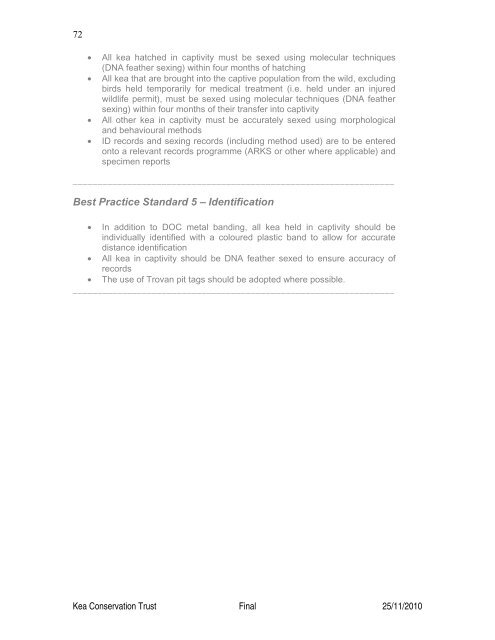(Nestor notabilis) Husbandry Manual - Kea Conservation Trust
(Nestor notabilis) Husbandry Manual - Kea Conservation Trust
(Nestor notabilis) Husbandry Manual - Kea Conservation Trust
Create successful ePaper yourself
Turn your PDF publications into a flip-book with our unique Google optimized e-Paper software.
72<br />
• All kea hatched in captivity must be sexed using molecular techniques<br />
(DNA feather sexing) within four months of hatching<br />
• All kea that are brought into the captive population from the wild, excluding<br />
birds held temporarily for medical treatment (i.e. held under an injured<br />
wildlife permit), must be sexed using molecular techniques (DNA feather<br />
sexing) within four months of their transfer into captivity<br />
• All other kea in captivity must be accurately sexed using morphological<br />
and behavioural methods<br />
• ID records and sexing records (including method used) are to be entered<br />
onto a relevant records programme (ARKS or other where applicable) and<br />
specimen reports<br />
_________________________________________________________________<br />
Best Practice Standard 5 – Identification<br />
• In addition to DOC metal banding, all kea held in captivity should be<br />
individually identified with a coloured plastic band to allow for accurate<br />
distance identification<br />
• All kea in captivity should be DNA feather sexed to ensure accuracy of<br />
records<br />
• The use of Trovan pit tags should be adopted where possible.<br />
_________________________________________________________________<br />
<strong>Kea</strong> <strong>Conservation</strong> <strong>Trust</strong> Final 25/11/2010












